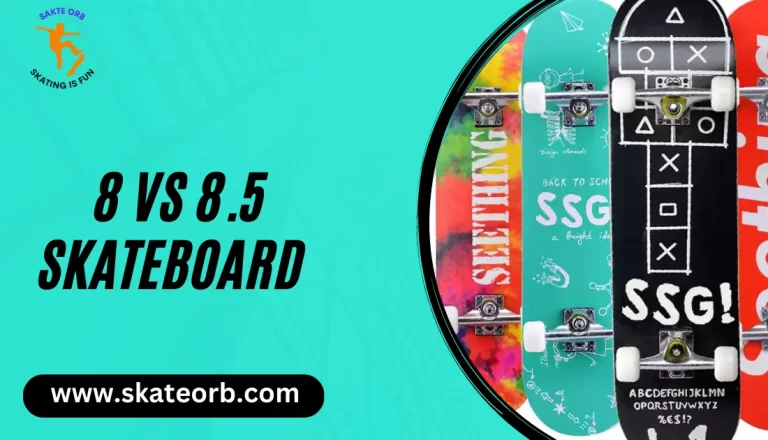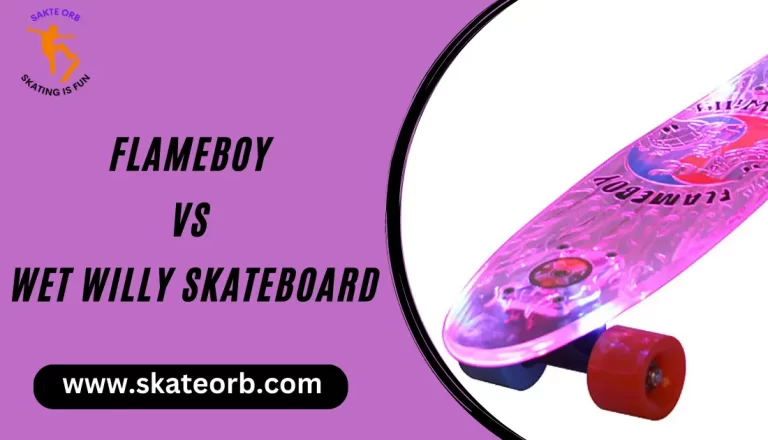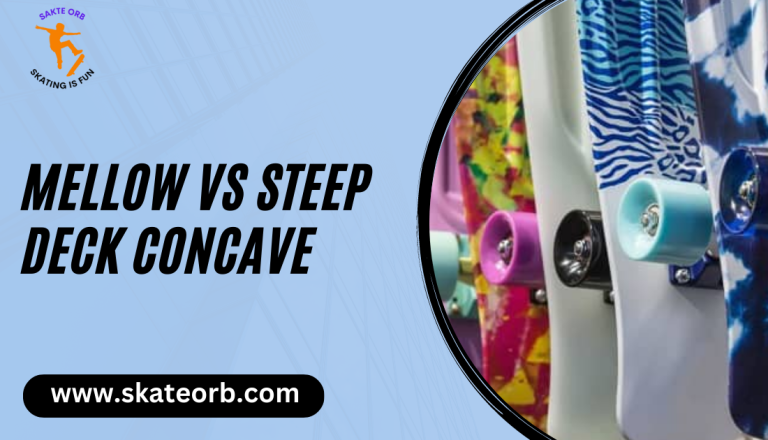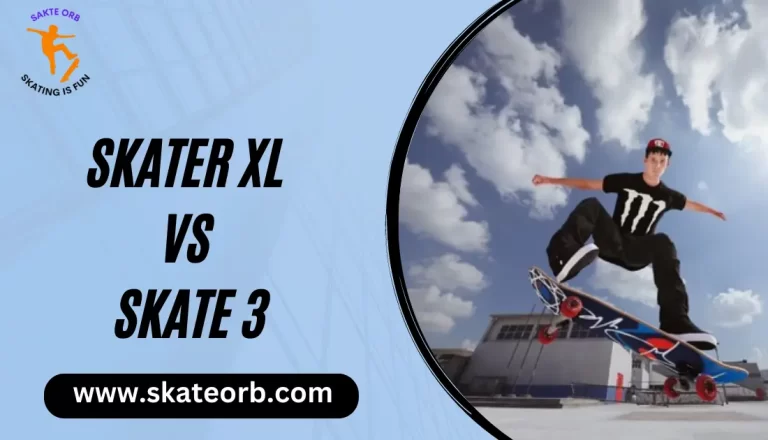Skate Helmets vs. Bike Helmets
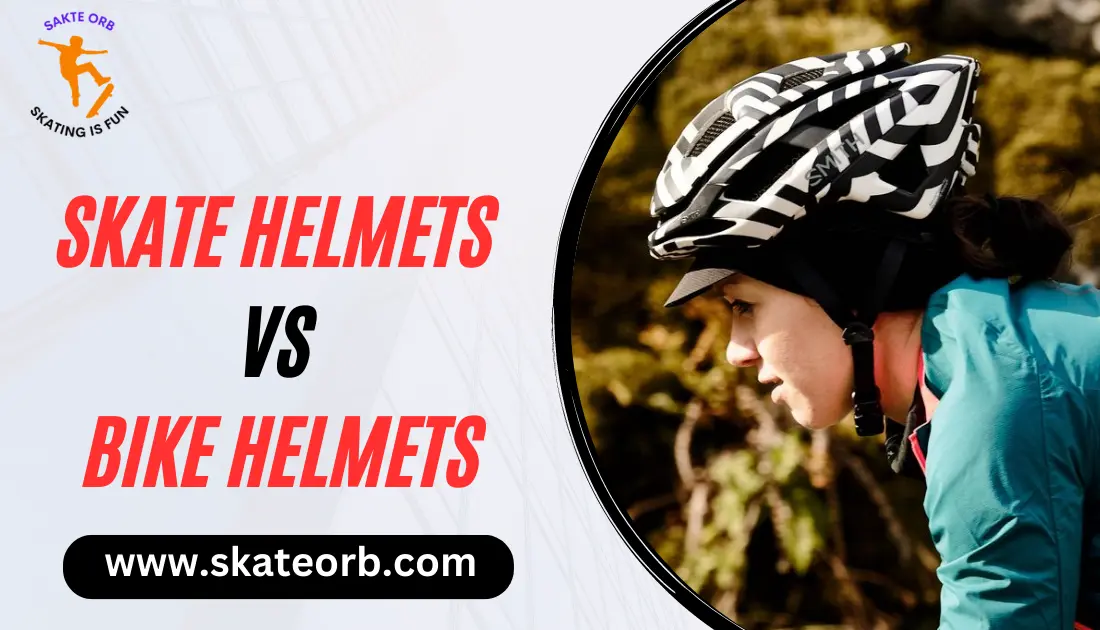
If you are curious about Skate Helmets vs. Bike Helmets? Then we will provide you with enough information about it. Standards for safety, materials, ventilation, and other factors vary. This distinction is based on the functions of those helmets as well as the differences between the two sports.
Skateboarders and cyclists place a high priority on safety in their daily lives. Falling to ensure such a feature could put us at risk of injury. So, before and during rides, we should always consider safety.
When participating in any sport, it’s essential to wear specialized protective equipment. Nonetheless, you can wear several of these helmets interchangeably, providing that they pass safety criteria.
Bike Helmets
A single significant impact can be absorbed by bike helmets. As an illustration, consider a fast-moving fall on a road or a car accident. The foam in the helmet is compressed by such an impact.
Helmets for bicycles perform the same functions as those for skateboards, but they are only suitable for cycling-related activities. Should the cyclist encounter accidents while riding his bike, they secure and protect the head from serious injuries.
When a bike helmet experiences a significant impact, it must be thrown away because the impact changes the helmet.
Single-hit helmets can withstand minor impacts, you don’t have to discard them because you bumped into a branch.
| Outer Part | Polycarbonate is used in pricey cycling helmets. But if you prefer a more affordable option, you could choose headgear made of plastic like PET. |
| Inner Part | If we look a little closer, we may also locate a few helmets constructed of polyurethane or expanded polypropylene. |
| Accompaniments for riding | Much like skateboard helmets, bicycle helmets are held in place by straps. |
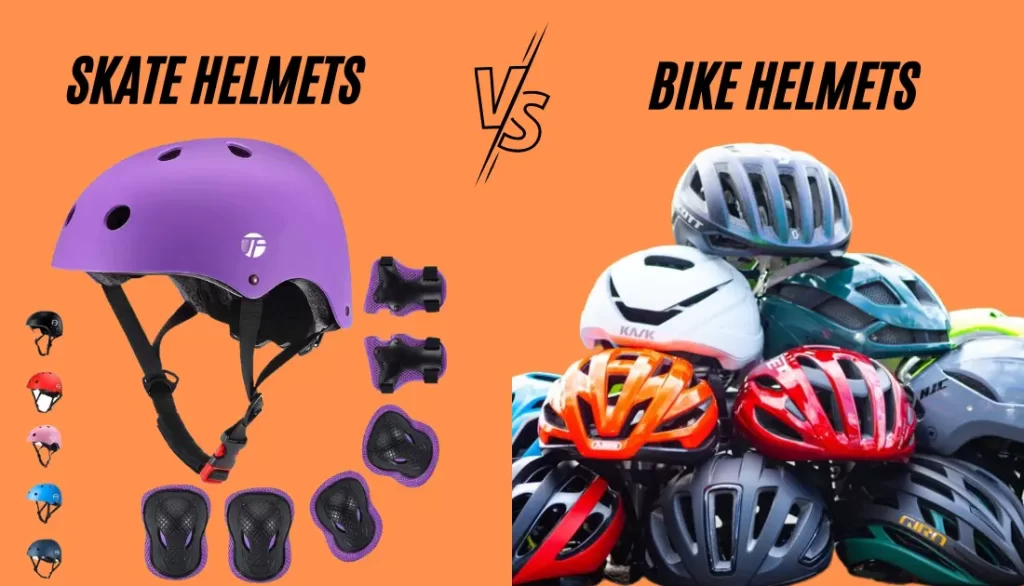
Skate Helmets
This kind of helmet is designed for many low collisions, the kind that frequently occurs while skating, rather than single high-impact hits.
Skate helmets are safety gear that lessens the force of head contact in the event of horrifying skateboard falls. They are made of a strong, bucket-like external shell with padded interiors and straps for secure closure. Also read the comparison between two deck producing brands, Alien vs predator skateboard decks.
According to this alternative regulation, you shouldn’t ride a bike while wearing a skate helmet that has only one certification, like only ATSM. Skate helmets’ thicker outer shells are similarly built to resist numerous collisions.
| Outer Part | ABS Plastic is the most widely utilized material for skateboard helmets. Abrasion and direct impact are things that this material can withstand with ease. |
| Inner Part | There are two types of interiors for skateboarding helmets, comfort liners, and Eps foam. |
| Accompaniments for riding | helmets are not hats, therefore don’t mount them. |
Differences between Skate Helmets vs. Bike Helmets
The main difference between skate helmet vs bike helmet sre given below in detail
Style
For aesthetic reasons, several casual road cyclists, commuters, and mountain bikers use skate-type helmets.
Skateboarding helmets can be adaptable much like they are for snowboarding and inline skating. After all, style stays next to safety and other key elements when choosing bike and skate helmets. Few skateboarders or skaters, nevertheless, actively seek out bike-style helmets for their aesthetic appeal. Skate helmets could be said to seem cool skateboarding helmets and younger.
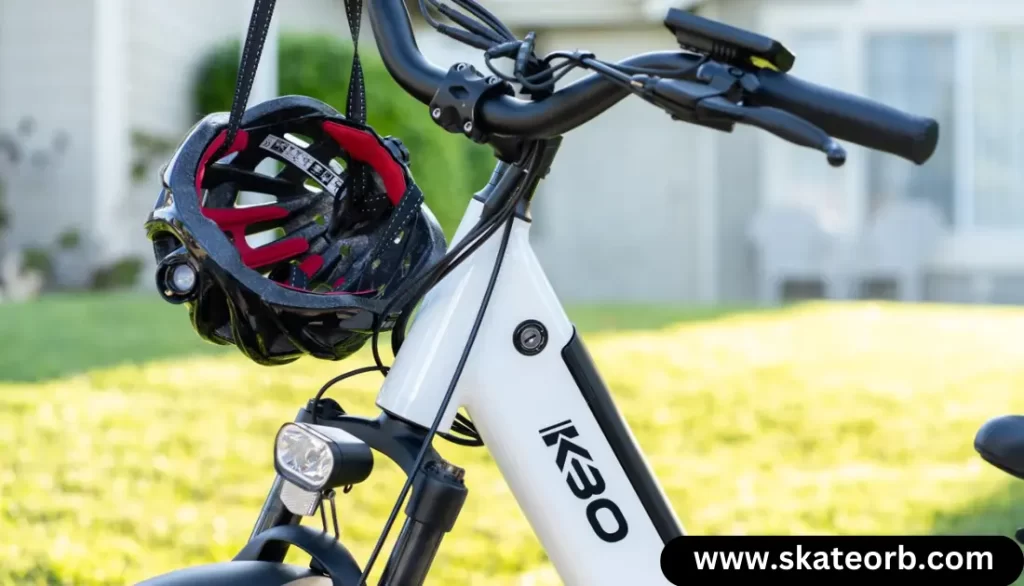
Head Coverage
All skateboard helmets, when compared to the thousands available, offer complete back-of-the-head protection because Skateboarders are more prone to fall backward, thus this is the reason. Skate helmets feature a smooth, rounded form. Users’ foreheads to the base of their heads are covered by them.
This headgear stands out for its lower back portion. It offers wearers defense against repeated falls backward.
Bicycle helmets, meanwhile, differ based on the specific sport that the rider is participating in. For road cycling, mountain biking, and track cycling, there are various helmets.
The form of road cycling helmets is frequently longer and does not extend down to cover the wearer’s neck. Track cycling helmets are even more streamlined and don’t have vent holes but a solid surface. Full-face motorcycle helmets and mountain bike helmets are similar in design.
Vents
Vents are a crucial part of bike helmet design since they keep the head cool and ventilated. As a result of the faster riding speeds of cyclists, the vents are intended to maintain airflow. This is why bike helmets have vents in the front and out the back to work with the wind.
Skate helmets also include vents, although they are often smaller and not made to let as much air through as other helmets.
No matter how well-ventilated they are, helmets can get warm if you wear them for a long time. This is due to the foam liner. Although the foam absorbs heat, most of it should escape from a well-ventilated building.
Durability
Comparing the basic durability of a single-impact helmet against multiple-impact headgear is a little unfair. Of course, skate helmets are more impact resistant than bike helmets.
The main difference between skateboarding helmet vs bike helmet is that, Skateboard helmets are more resistant to impacts because they have constructions tailored to each need and serve various goals. If anything, a comparison of their levels of endurance only makes sense when we take into account how interchangeably they are.

Visors
Visitors are frequently transparent and adjustable, allowing wearers to adjust the protective layer’s height to their preference.
The visor, which is a part of the front of the helmet, serves as a barrier to keep dirt and dust from getting into your face and eyes.
Unlike road cyclists who use sunglasses to shield their eyes, mountain bike riders often have visors n their helmets.
The majority of skate helmets are visorless, but some manufacturers do add small, fixed visors to their products.
The exterior of Helmets
Skateboard helmets often have a stronger outer shell than bicycle helmets. They frequently have fiberglass or carbon fiber reinforced with para-aramid.
The fibers have a low weight-to-strength ratio, high stiffness, and tensile strength. Skate headgear can therefore withstand abrasion and won’t fracture after several crashes.
The exterior of bicycle helmets is more lightweight. Typically their shell is made of a thin plastic layer. The majority of the work is done by the EPS foam in these single-impact helmets. Also, cycling places more emphasis on speed. The cyclist can move quicker with lighter equipment.
Safety Standards
Both skateboard and bike helmet should be covered by the CPSC or ASTM requirements, depending on their design and intended use.
If it’s made in the US, a good biking helmet should adhere to CPSC regulations. Moreover, CPSC skate helmets are available, both with and without ASTM F1492 certification.
Skateboard headgear with solely ASTM certifications (i.e., those without dual certifications) has softer foam and shouldn’t be worn during high-impact sports.
It’s important to note that different nations have varied requirements for helmet safety. For instance, the British Standards Institute mandates that helmets sold in the UK conform to EN1078. It is the most typical accreditation for helmets used for rollerblading, skateboarding, and cycling.
Pros and Cons of Skate Helmets Bike Helmets
The pros and cons of bike helmets vs skate helmets are given below:
Pros
- Provides warmth for your head during cold weather.
- By lowering the risk of head injuries by 60% to 88%, helmets save lives.
- Bike helmets provide protection and help to avoid skull fractures, concussions, and other head injuries.
Cons
- Even those that fulfill safety regulations are not impenetrable.
- If your head is sensitive to pressure or touch, it may be initially uncomfortable to wear.
Pro and Cons Bike Helmets
Pros
- withstands numerous low-impact skateboard accidents
- lowered danger of skull fractures and other head injuries
- more protection and better back cushioning than conventional cycling helmets
Cons
- less rigid inner foam
- For low-impact collisions only
- fewer vents than on bicycle helmets
Features of Skate Helmets vs. Bike Helmet
There are many features of both helmets. Which are given below:
Features of some bike helmets
There are many types of bike helmets and every helmet has its feature but features, in general, are given below:
- Helmet vents improve airflow over your head, allowing you to be cooler and more comfortable while riding. The helmet also becomes lighter the more vents it has.
- Visors that block the sun are popular among riders and are frequently found on mountain bike helmets.
- For downhill mountain riding or racing, some mountain bike helmets incorporate a wraparound chin bar.
- Certain helmets are made to let you attach a mount for an action camera or a light (sold separately).
Features of Some Skate Helmets
- The top skate helmets in the world have an ABS-plastic outer shell, EPS foam that is high impact resistant, soft and extra thick cushioning, replaceable liners, figure skating head protection and adjustable chin straps with side release buckles.
- Skateboard helmets come in three different styles, traditional, full face helmet skateboard, and full cut.
- These robust head protective devices frequently meet ASTM F1492 and 16 CFR Part 1203 maximum safety standards and are lightweight and long-lasting.
- Ventilation systems will prevent excessive sweating and keep your head cool, while safety rear lights will make sure other cars can see you at night.
Tips to buy Helmets
Hence, if you’re looking to acquire a helmet for yourself, consider the following factors when doing so:
- If the helmet is heavy, it will be uncomfortable to wear while skating or riding.
- The headgear must be sturdy enough to survive small falls.
- The interior of the helmet ought to be plush.
- Make sure you can wear a helmet. There shouldn’t be any excessive tightness or looseness. (Loose helmets can come off in a collision or accident and cause you ongoing discomfort. Tight helmets can be quite uncomfortable, and you risk suffering head injuries.
Conclusion
The aim of a skateboarder and a biker regardless of the sport or environment, is to perform abilities with increasing intensity. But achieving such objectives requires being able to practice safely, which is why using protective gear is just as important as taking your time with each step.
Knowing the differences between a skating helmet and a bike helmet should make your decision a little simpler. We can’t help but choose the best helmet after discussing the differences between the type types of gear. Hope so this article helps you to get enough information about Skate Helmets vs. Bike Helmets.
FAQs
Can i use a Bike Helmet for Roller Skating?
Inline skating and scootering can both be done while wearing a bike helmet. The helmet used in skateboarding is unique and different. Bicycle helmet use lowers the risk of head injuries by more than 40%, severe head injuries by 60%, and traumatic brain damage by 53%.
Why do Mountain Bike Helmets Have Visors?
On a mountain bike as opposed to a road bike, an MTB rider is more upright, enabling a visor to shield sun glare while maintaining a clean forward view. The visor offers more protection in the event of a fall. MTB cyclists often move more slowly than road bike riders, thus visor wind drag is not a problem.
How do I Choose the Best Skateboarding Helmet?
Skateboarders’ heads and the foam or padding of the helmet should not have any gaps between them. Ask your child or teen. A helmet must fit snugly, yet an overly tight one can give the wearer headaches.

Who Is Roy Harris
Hey there, I’m Roy Harris, and skateboarding is my life.
Growing up in sunny Southern California, I fell head over heels for skateboarding at an early age. From the moment I stepped on a skateboard, I knew it was my calling.

